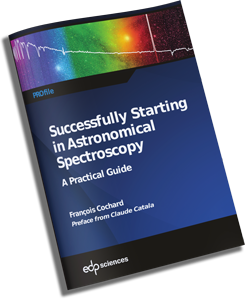eShel performance improvement : long live eShel II !
The Hδ line (4101Å) now accessible!
by François Cochard and Olivier Garde
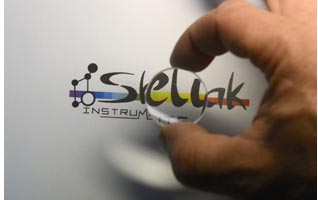
Since a few months, we offer optical fibers that have a better performance in the blue part of the spectrum. There is a lot of astrophysical information in the blue, and we have sought to take advantage of this improvement to extend the performance of the eShel spectroscope.
The original design of the eShel spectroscope, which dates back to 2009, used “generic” optical components in the catalogs of industrial suppliers. The technology, materials and tools available today allow us to make “bespoke” optical components, optimized for use in spectroscopy. In this context, the modification of the eShel collimator doublet allows a significant gain in performance for extreme wavelengths, especially in the blue.
This article shows the gain obtained after the change of the doublet which is located after the entrance of the optical fiber in the tube which brings the parallel beam (collimated) inside the spectrograph, before it is diffracted by the gratting . The new doublet has been calculated to reduce chromaticism as much as possible in a wide spectral range.
An upgrade kit available
Shelyak Instruments now offers an eShel spectro update kit. This is to replace the “collimator module” – the support tube of the optical fiber of the spectrograph containing the doublet.
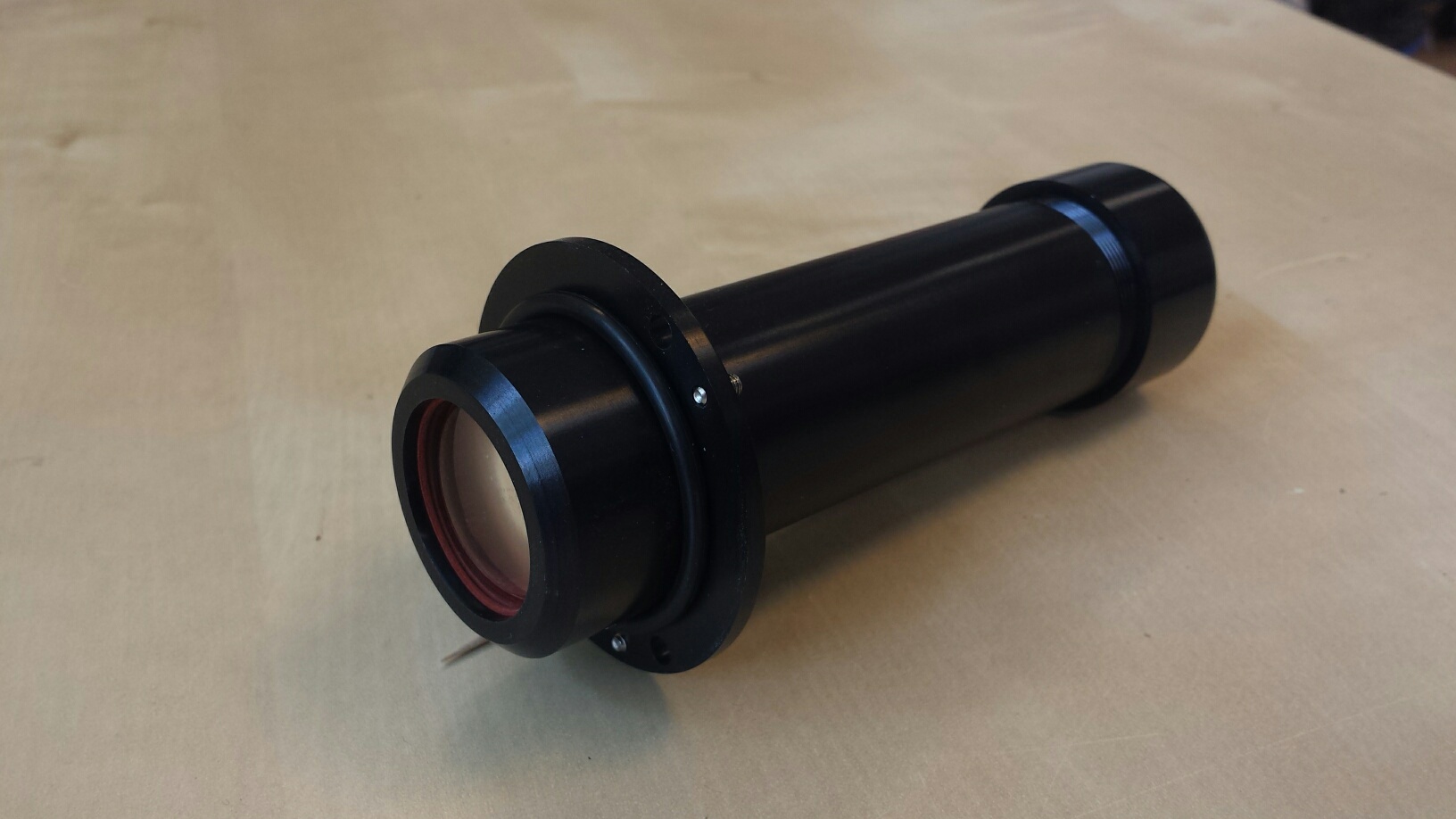
The update is easy to achieve, by simply unscrewing the 3 screws supporting the tube and replacing it with the new tube :
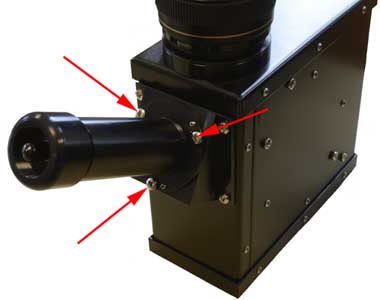
No new tuning is necessary to produce spectra (the focus of the doublet on the optical fiber is made in the factory). It will just be necessary to adapt the parameters for the data reduction in AudeLA (see this page for details).
Note (1) : To take full advantage of the improvement provided by this new collimator doublet, it is strongly recommended to use a “high-oh” optical fiber, new generation (sensitive in the UV).
Note (2) : From now on, all the new eShel spectroscopes are delivered with this new doublet.
The results
Without waiting for the night, one can already make a first test with the Thorium/Argon calibration lamp of the eShel. the raw image produced shows the gain obtained with the new doublet :

While the initial configuration limited operation to orders #32 (7100A) to # 52 (4275A), orders # 30 (7500A) to # 55 (4050A) can now be covered : Hδ line is now accessible. This without changing spectral acquisition habits or software settings.
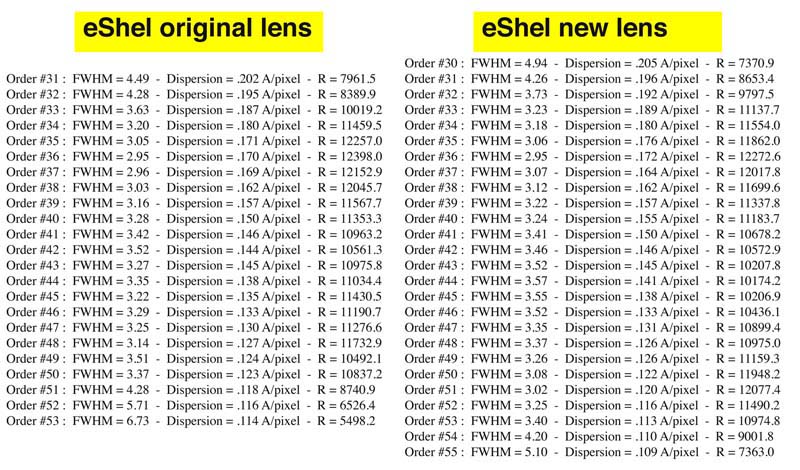
The resolution is significantly improved on several orders and we now obtain a resolution greater than 10,000 for orders from # 33 to # 53 inclusive (instead of # 33 to # 50 for the old doublet). For the orders # 54 to # 55, the resolution is less varying from 7000 to 9000 according to the orders, it is the same for the orders # 30 to # 32 included. The graph below shows the resolving power obtained for each order, for the original eShel and its updated version :
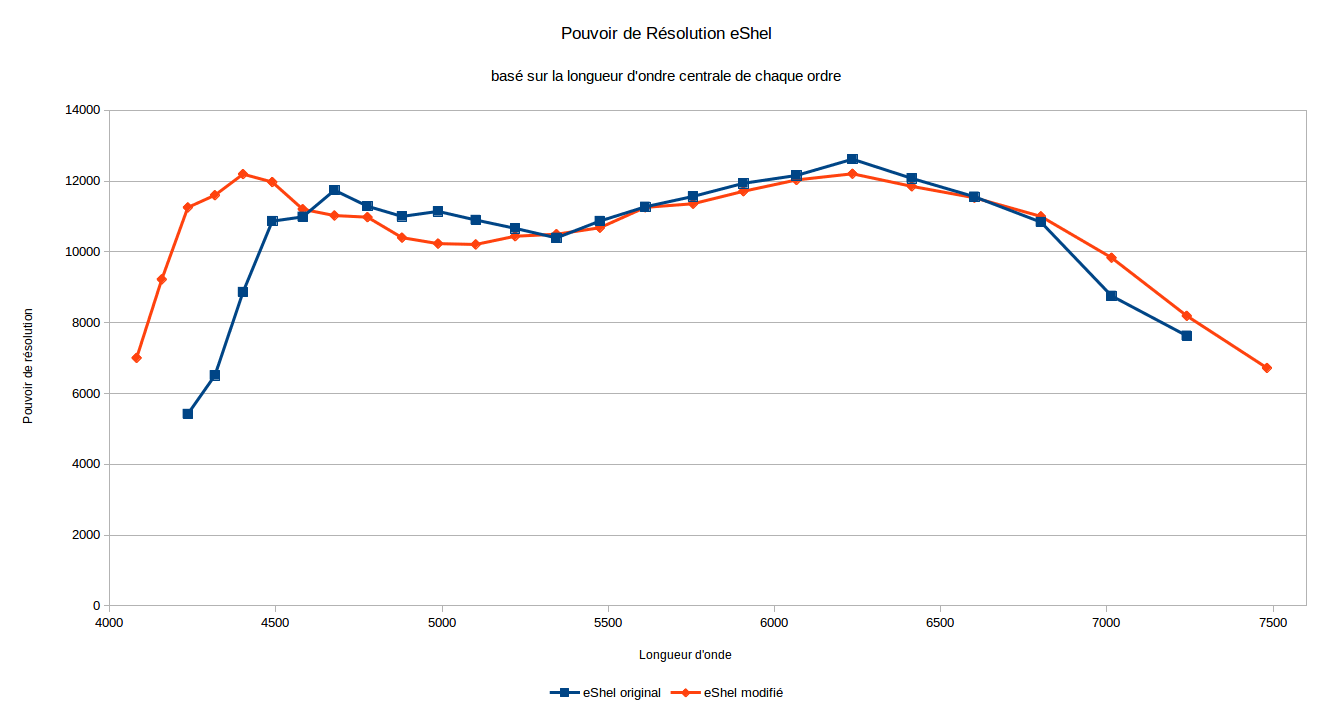
A test on a star shows that we get all orders from # 30 to # 55 without problems, which makes it possible to have one more Balmer line than the previous version. The graph below shows the spectrum of Phecda, a Be star of magnitude V = 2.44.
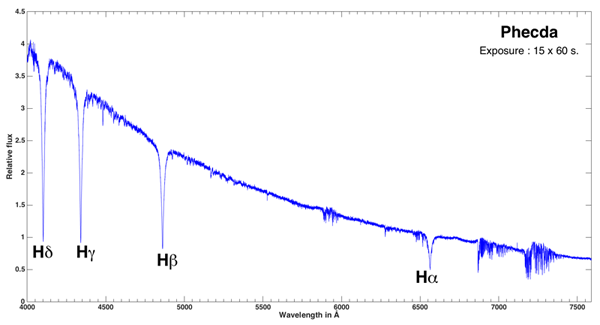
To go even further …
The modification of the eShel collimator doublet opens the door to further improvements : it is no longer the limiting element of the instrument. You can see on the aras forum the discussions on this subject.
In a few words, two elements limit today the exploitable spectral domain :
- the lamp of flat (which does not have enough flow in the deep blue one would need a lamp with much higher temperature),
- the photo lens (Canon 85mm F / 1.8).
We are actively working on these elements, to propose in the coming months a further significant improvement of the instrument !
From today, optimizing the number of flat and the time exposure (to have a good snr in the blue) it is possible to treat the orders # 56 and # 57, the latter containing the famous H & K lines. But these are still difficult to obtain by keeping good snr without changing other elements of the spectrograph.
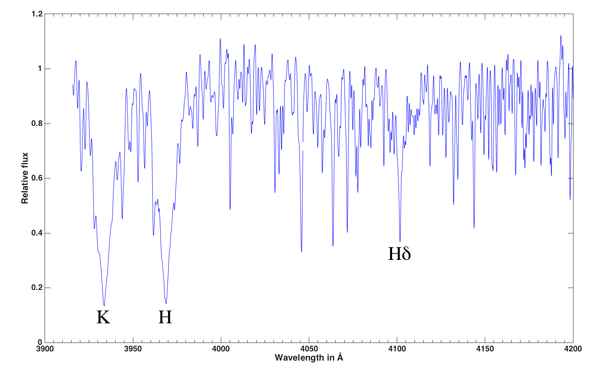
The graph above shows the H and K lines of the Sun of order # 57 with a resolution of R = 6000-7000. H∂ is in order # 55. The exposure time remains very important in order to obtain a sufficient snr in this part of the near-UV spectrum (here with an ATIK 460ex in 2×2 binning).
Another example of a spectrum obtained on a B type star with the Balmer lines up to H epsilon :
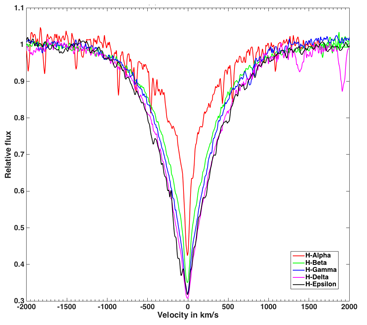
Balmer lines up to H-Epsilon (HD 155763)
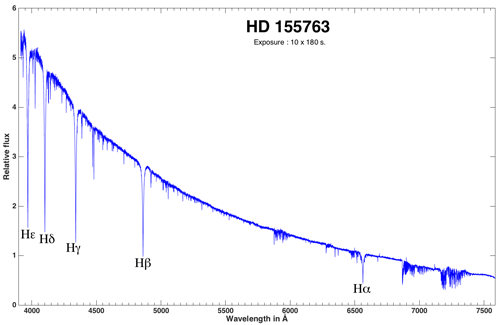
Spectrum of HD 155763 star (Zet Dra) type B6III

